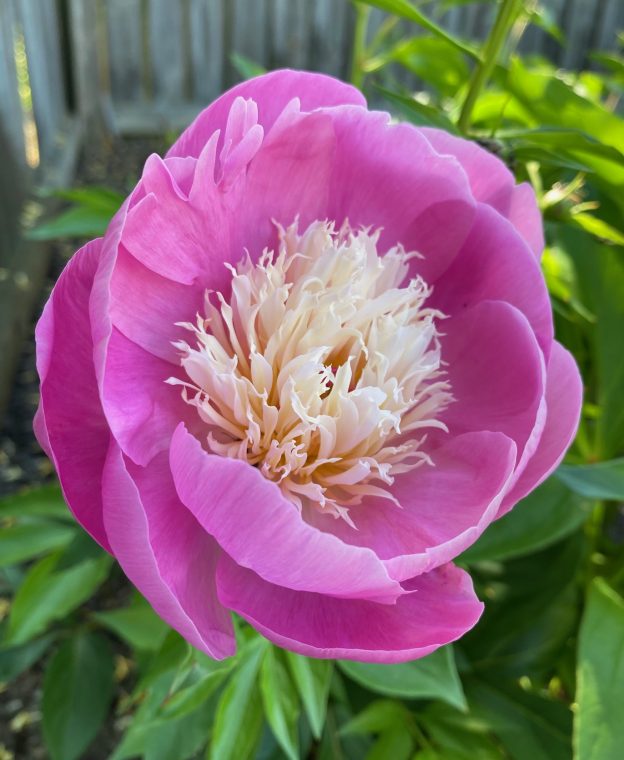
Love these cheerful daisies!
When you’re allergic to most things that grow outdoors, and you really like to garden, it makes life… interesting. This is especially true for me in late May, when people start mowing their laws twice a week, and the cottonwood trees go wild, raining little pollen-y poofs of snow down upon everything. Cottonwood is my nemesis. I tend to get hives when I hang out to long in the grass, and whenever I garden without gloves on, but cottonwood goes for an air assault approach. As Colonel Klink would say, “There can be no escape!”
I head out each morning to water. The cottonwoods behind our house stand tall, looking all innocent. Then, suddenly, a gust of wind will hit and I’ll narrow my eyes to find tiny little cottonwood seed clouds, drifting over my arms and face. Apparently, a single tree can release 25 million seeds. I feel like they’ve certainly caused me to go through 25 million tissues.
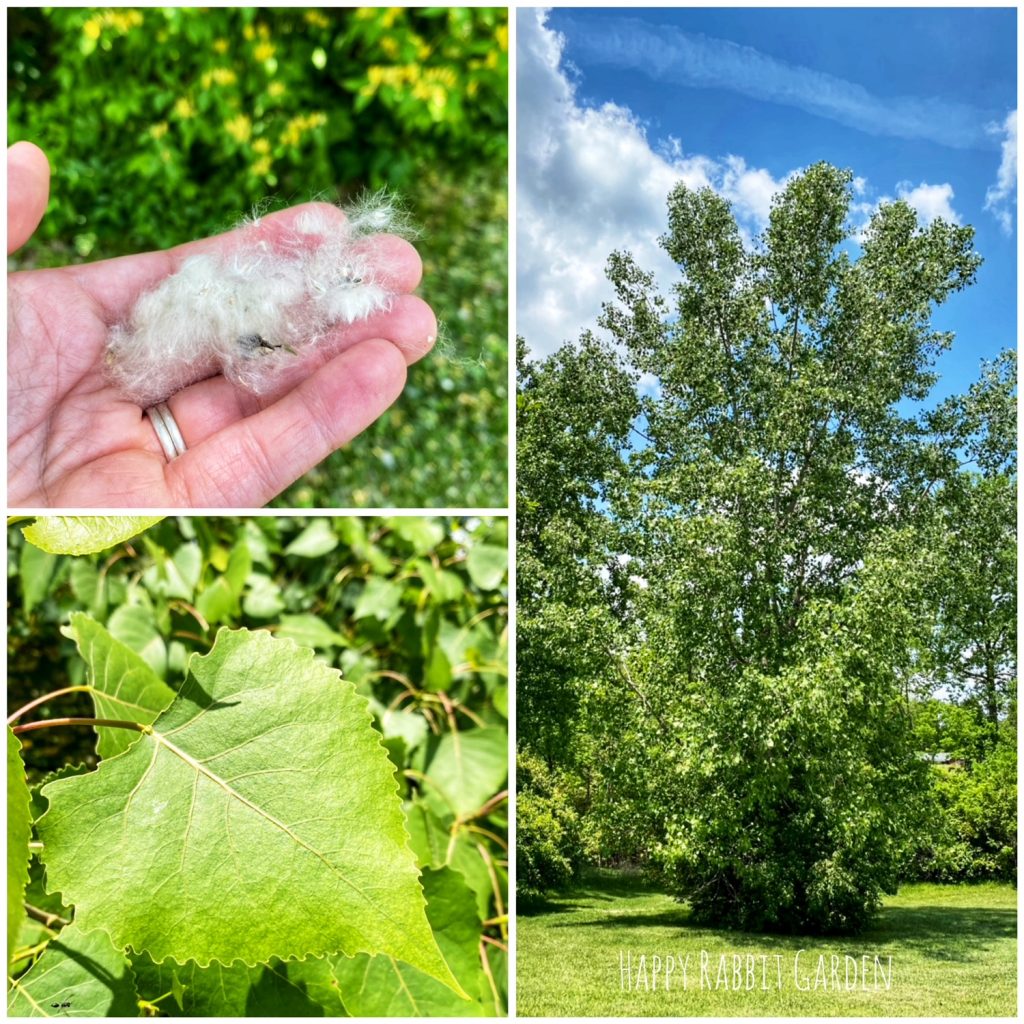
One of the cottonwoods behind our house, along with it’s fluffy seeds and leaves. There’s an invasive bush honeysuckle that’s swarming the bottom of the tree.
The husband suggested I do a little research about the trees, theorizing that they must be good for something. And, they really are. I learned that cottonwoods grow all over the US, being hardy in zones 2-9. They are the fastest growing trees in North America. Young cottonwoods can put on six feet of growth per year, and mature trees reach well over 100 feet tall. The trees drop seeds each spring, on clouds of cottony shields that float on the wind, but only female trees produce these.
Cottonwoods also provide quite a service to the environment. They grow up tall, so quickly, enjoying a variety of soil conditions. Their height and size allows them to give off a lot of shade, which is especially helpful in areas that aren’t heavily wooded. Beavers and deer dine on them, and cottonwoods in the northern states provide homes for migratory songbirds like warblers. Several species of butterflies and moths even require cottonwoods as host plants for their survival.
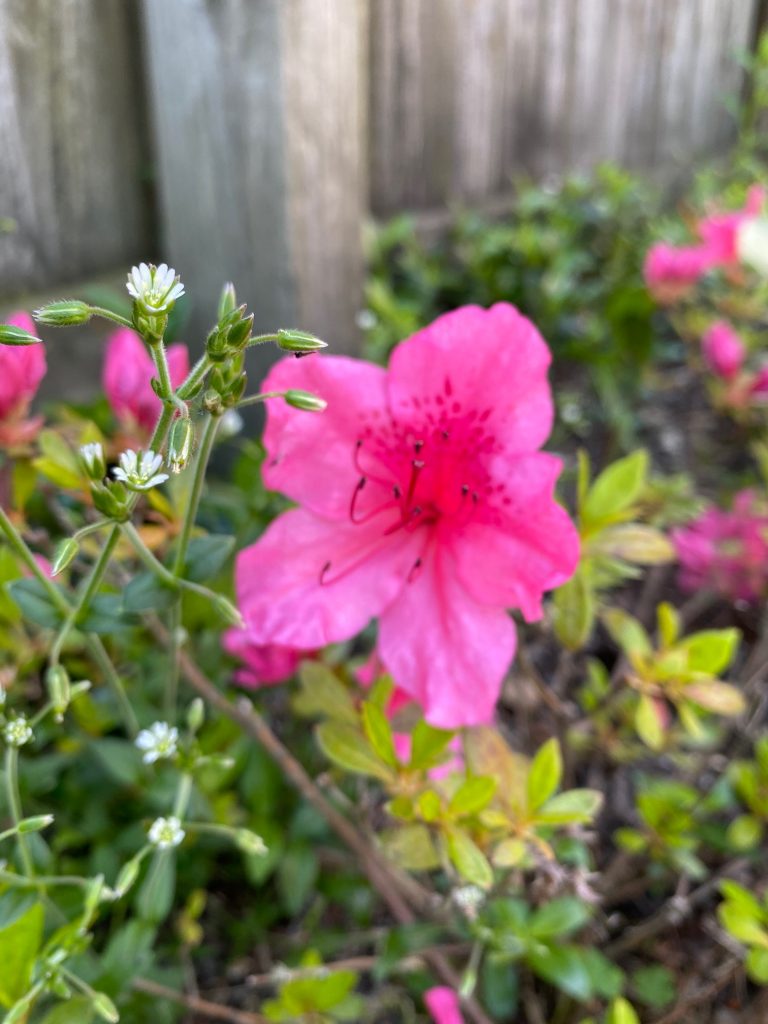
Azaleas, giving me less to sneeze about than these cottonwoods.
While the wood of cottonwood trees is fairly soft, and isn’t often used for woodworking, cottonwoods are used to make pallets and pulp for paper. Native American tribes along waterways used cottonwoods to build canoes. The soft wood allowed for easy carving for these boats, and the trees became a valued resource. Medicinally, salves and balms were developed from the leaves and buds of cottonwoods. Their sticky sap was also utilized as a glue.
So, from my drowsy, antihistamine haze, I now have a bit more appreciation for these trees. They really are pretty. Their leaves are lighter on the bottom than the top, and they look sort of magical, blowing in the wind. They are one of the first trees to turn color in the fall, a beautiful golden yellow. I collect a few each autumn and do a little eco dyeing, printing them on fabric and clothes.
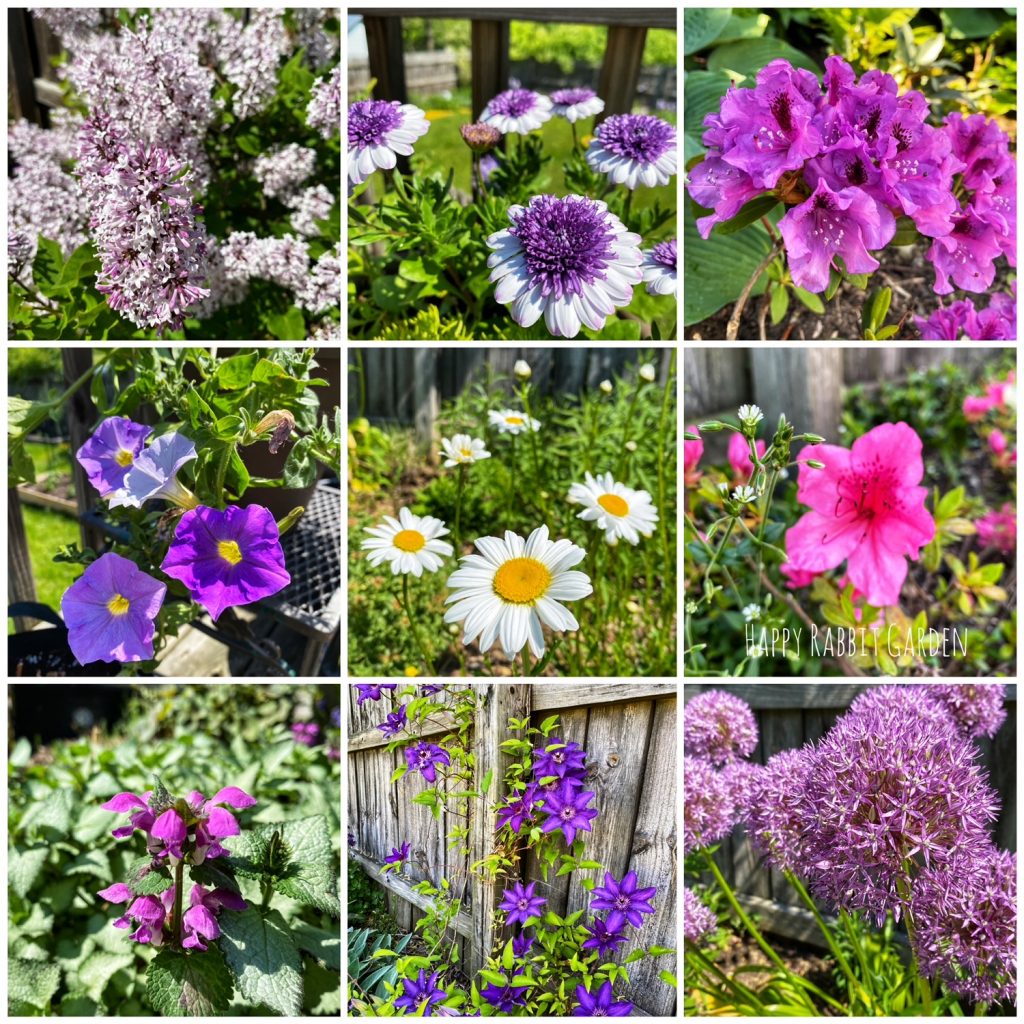
Lilacs, margurite daisies, rhododendron, petunias, daisies, azaleas, dead nettle, clematis, allium
Aside from sneezing a lot, the past week was pretty busy in the garden. It was really hot out, and we didn’t end up with any rain. Out in the flower beds, I try to grow things that don’t require a lot of watering (ie: native plants), but the veggies out in the new raised beds still require a daily watering. The poor tomatoes went from days in the 40s to days in the 90s, almost overnight. So, they’ve really needed the daily watering. I like to go out in the morning, before it gets way too hot and as I water, I get to see what’s new in the yard.
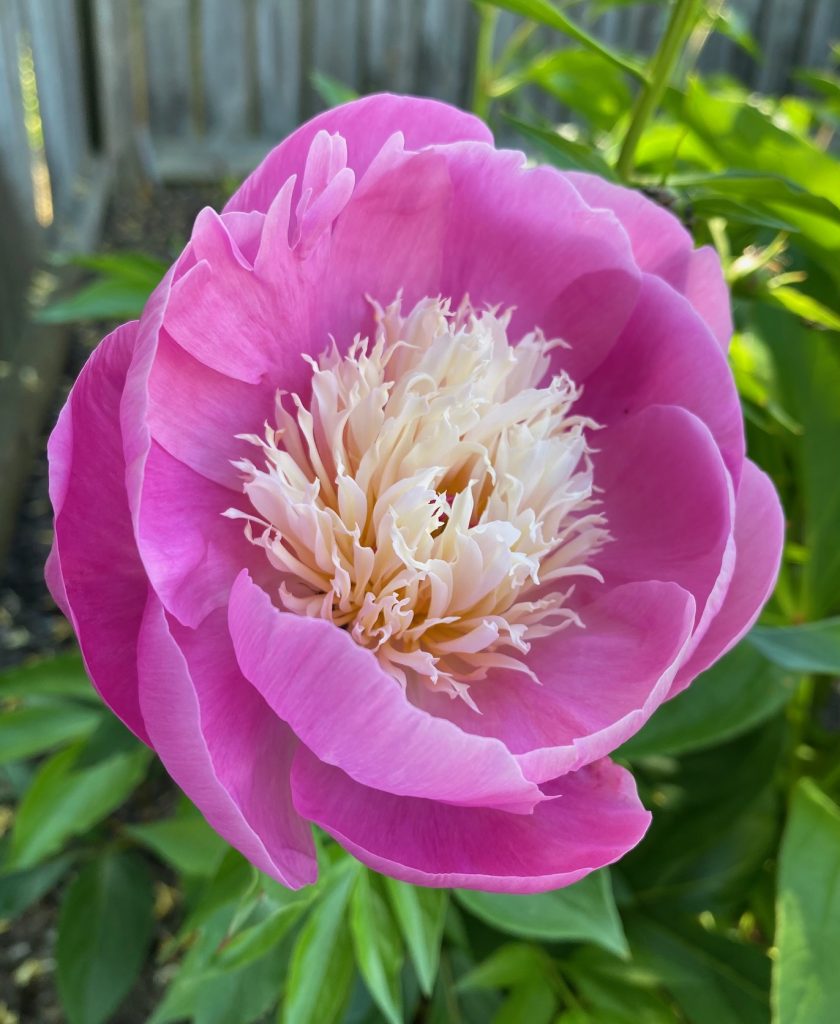
Peonies!

Our first strawberries, pole bean sprouts, and tomatoes
Despite the heat wave we’re having, with temps 10-15 degrees above normal, the garden is looking really nice. My beloved peonies are starting to bloom, and the first bed we put in, along the back of the yard, is full of life, with bees enjoying the nepeta, salvia, daisies, irises, roses, clematis, and creeping phlox.
I put in the last of this years seeds. The parsnips went in the last available space along some of the tomatoes. And, I put in our pole beans. They started sprouting a few days after I’d put them in. I planted a few more than we’ll need, in case the bunnies find them again this year. Buns seem to really have a thing for green bean sprouts! The tomatoes I planted seem happy in their new beds. I have a few green tomatoes already, and look forward to harvesting the first one once they ripen.
Out in the rest of the yard, I was excited to see some new volunteer plants blooming this week: swamp roses. The name leaves something to be desired, but these native roses are really pretty. They grow in most of the eastern US, and ours popped up between our fence and the neighbors fence. I have no idea how they found their way there, but the branches are now dangling over the fences, and we have pretty light-pink roses in bloom. The bees are enamored, and I am, too.
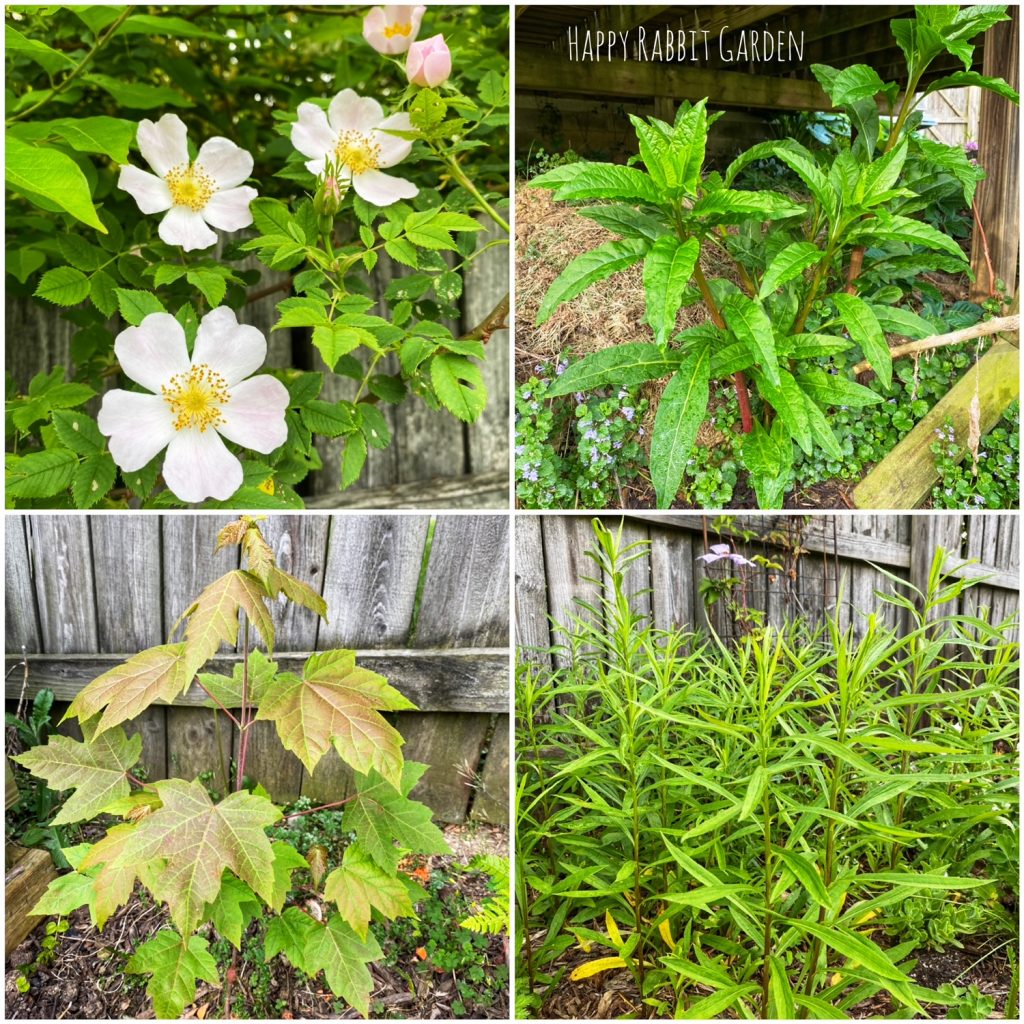
Swamp roses, pokeweed, red maple, and goldenrod
We have a few other plants like the swamp roses, that popped up without my having had anything to do with it. There’s a few bunches of goldenrod, a beautiful native plant that grows tall, and blooms with gorgeous yellow flowers in the last summer and early fall. Goldenrod is a very important plant for pollinators, as it’s one of the last things in bloom in this area. We also have some pokeweed, growing under the deck. This guy popped up for the first time last year, and I was thrilled to see the leaves again this year. Pokeweed is another native, with beautiful dark berries that birds love. They also make a really pretty dye, but wear gloves when harvesting them if you don’t want to explain to everyone why your hands are purple for a week! Finally, we’ve had a few volunteer trees pop up in the yard. I’ve moved a few of them, but one, a red maple, is enjoying life next to the compost pile right now. I’ll eventually have to move it away from the house, but this little sapling is growing like mad, and who can resist such beautiful green-red leaves?
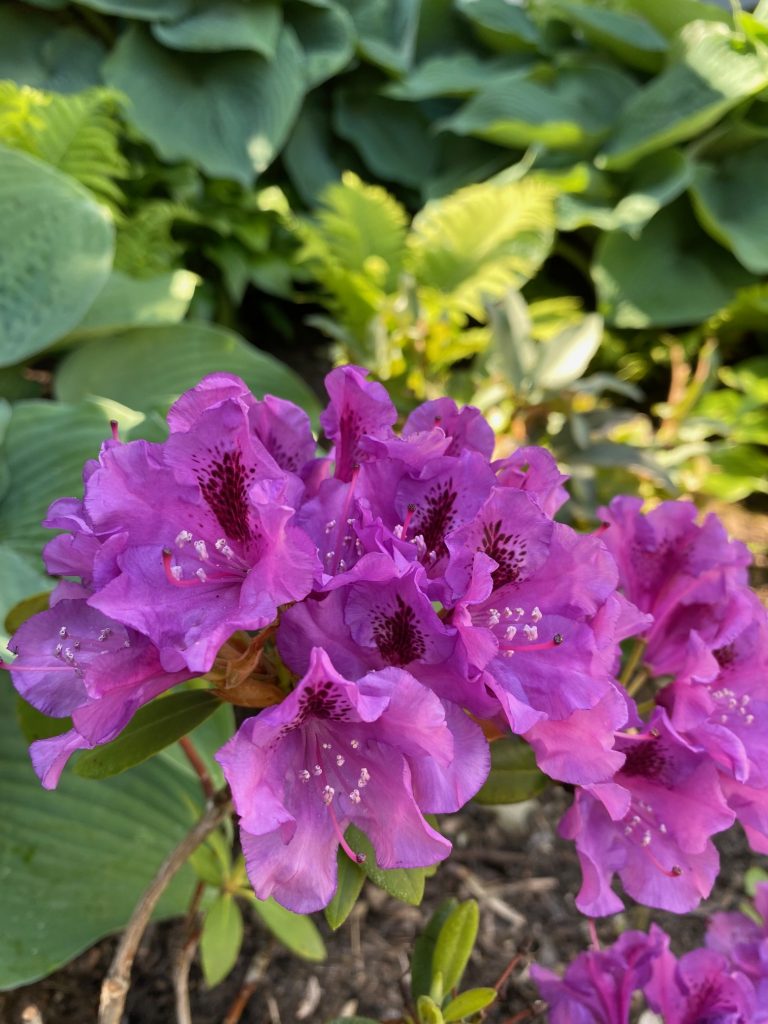
Rhododendron in the shade garden
The week ahead will be filled with lots of weeding and a bit more digging. The new pollinator bed in the front yard hellstrip is about 1/8 of the way finished. Ripping out sod is hard enough to talk myself into, but with the added heat last week, I didn’t get very far along. We’ll see what I get up to this week. Also, over the weekend, my parents split some perennials for me, and these new hostas, day lilies, and buttercups need to be planted. There’s never a shortage of work in the yard! Happy gardening!

